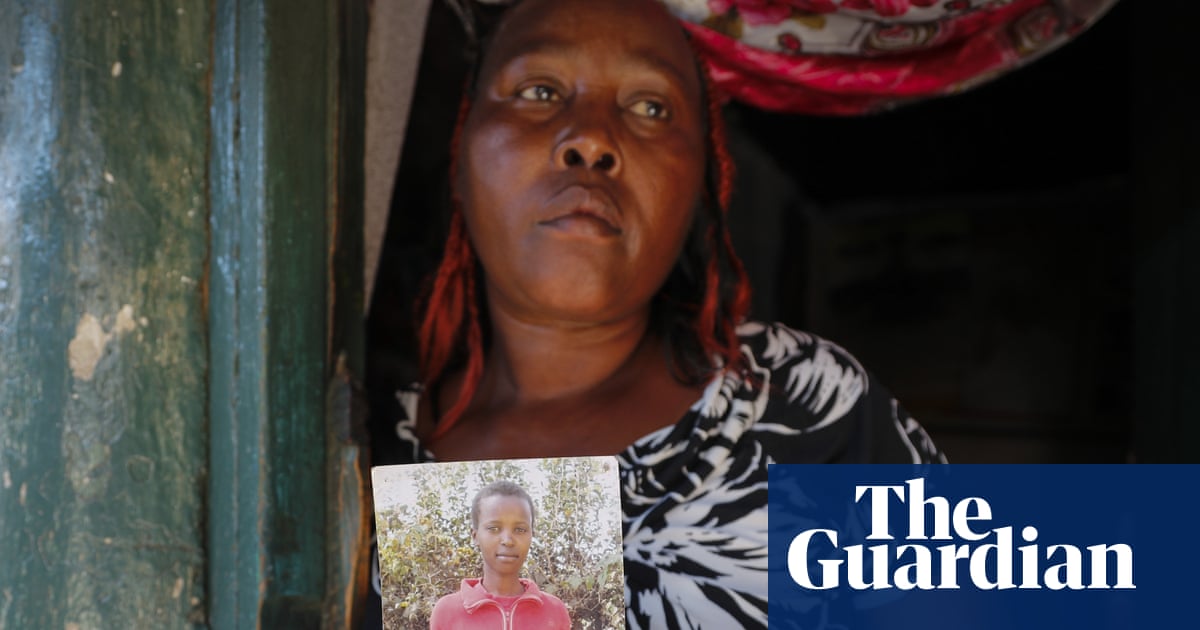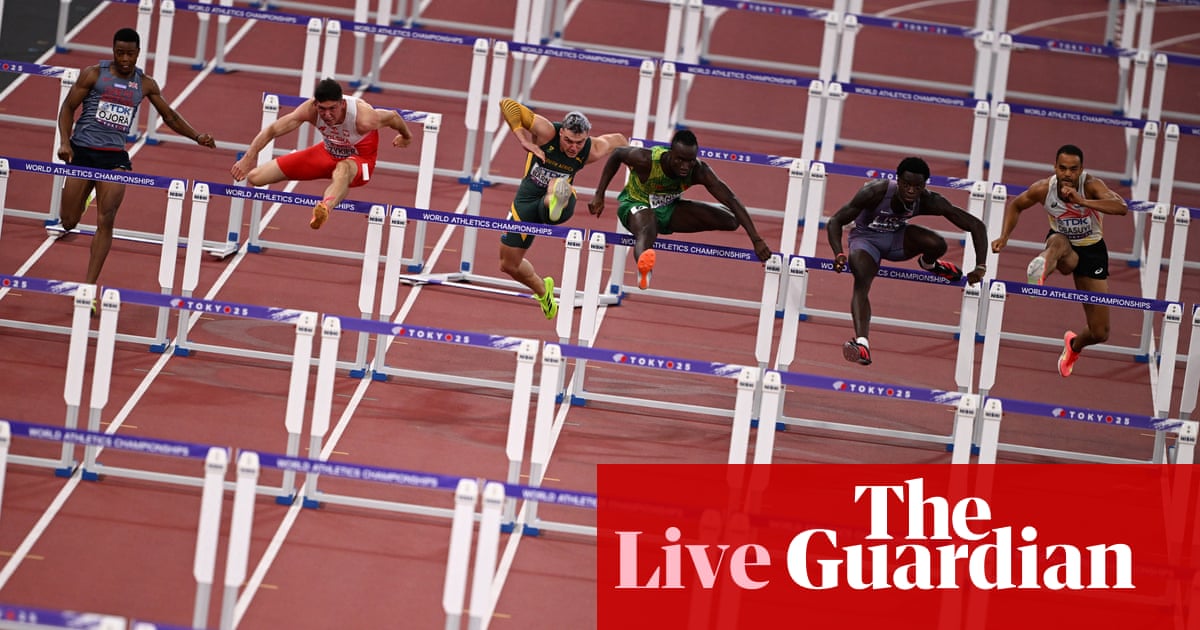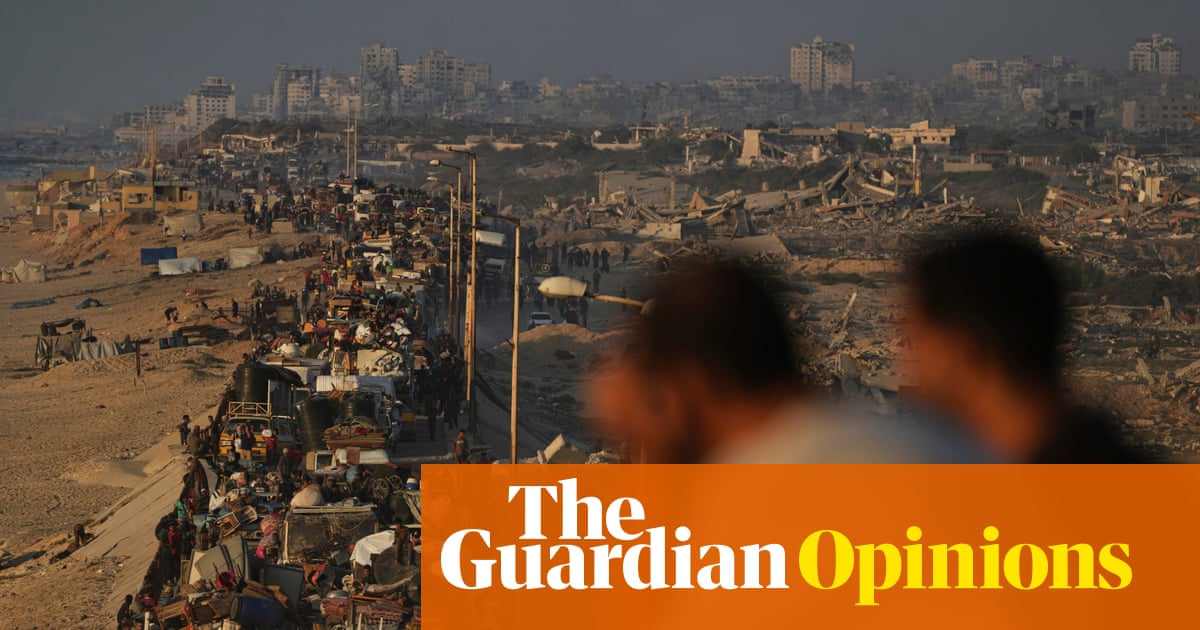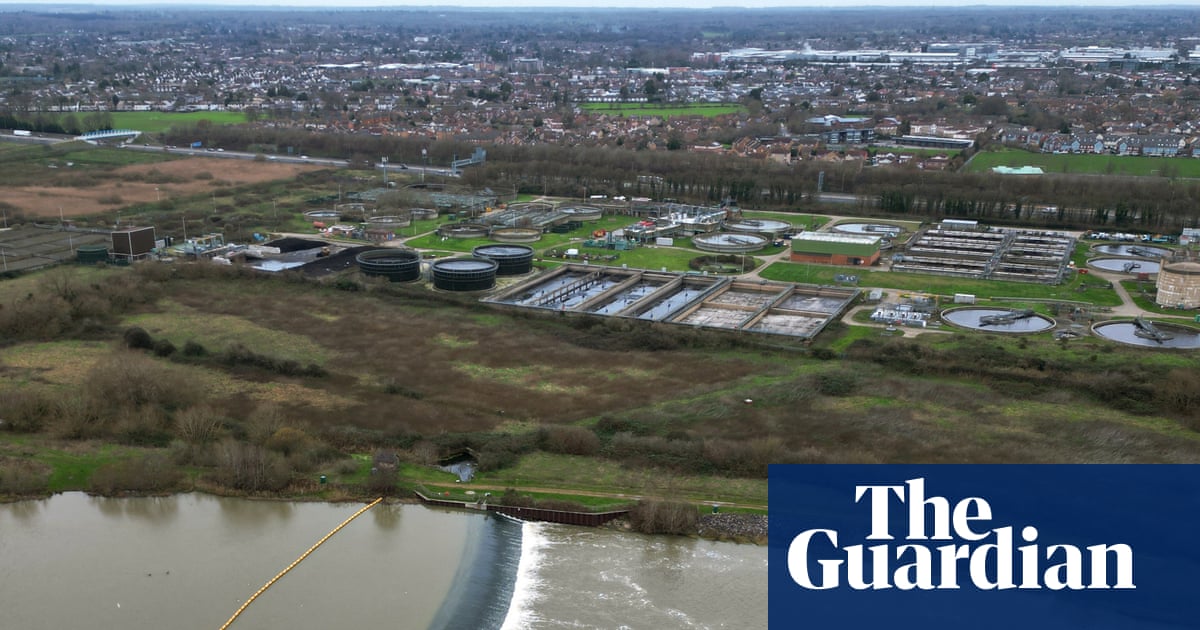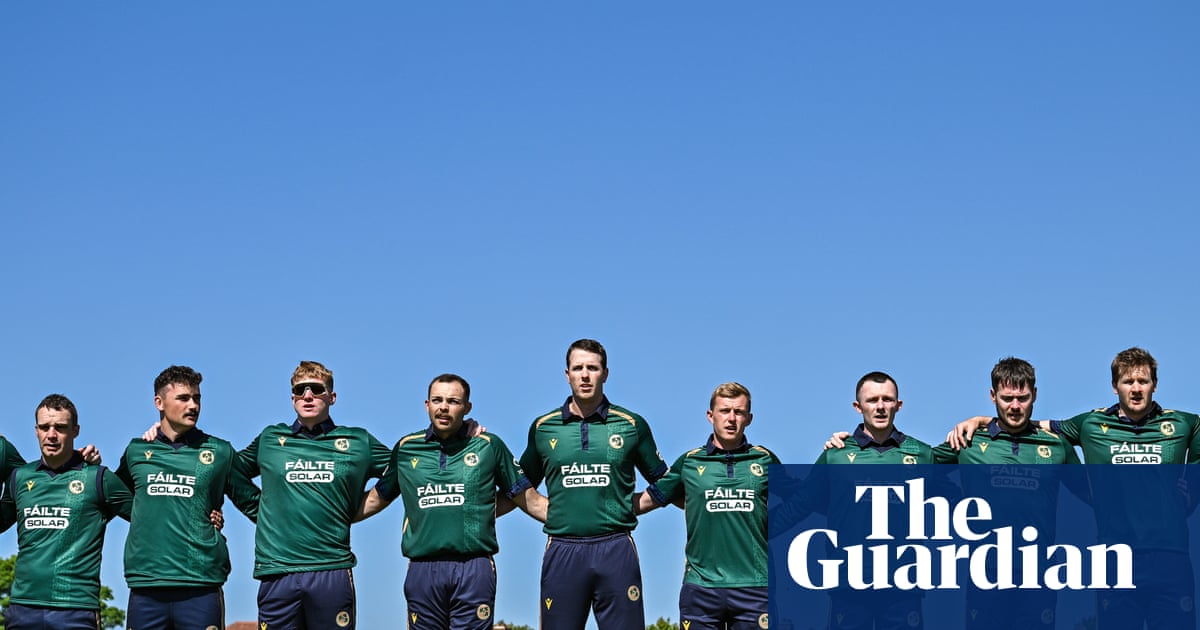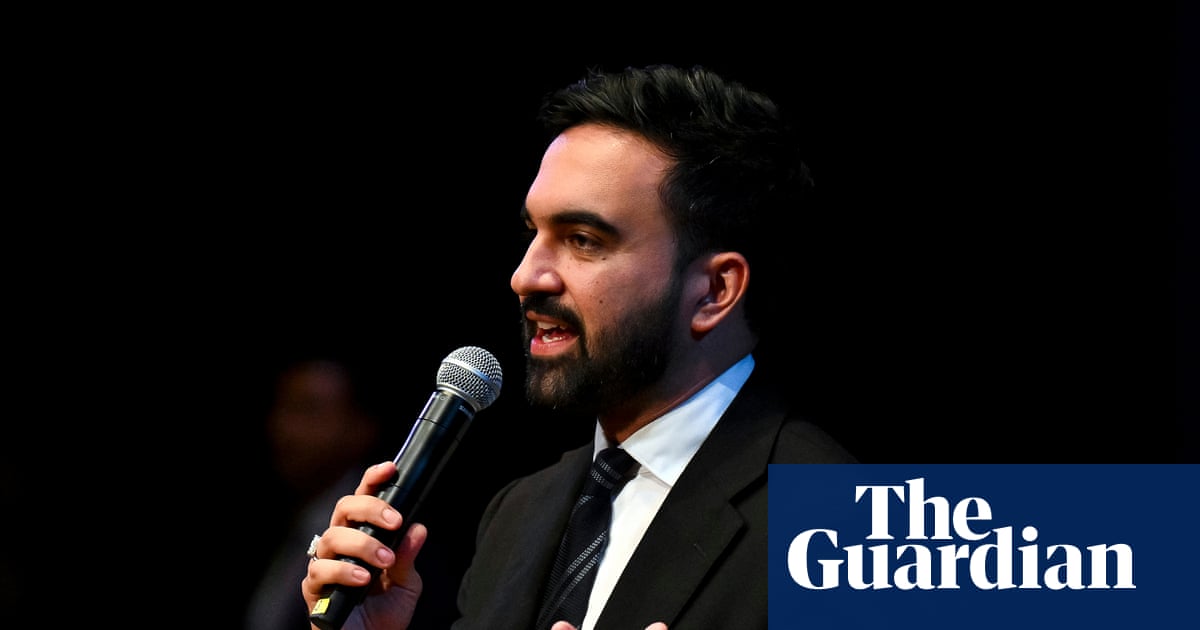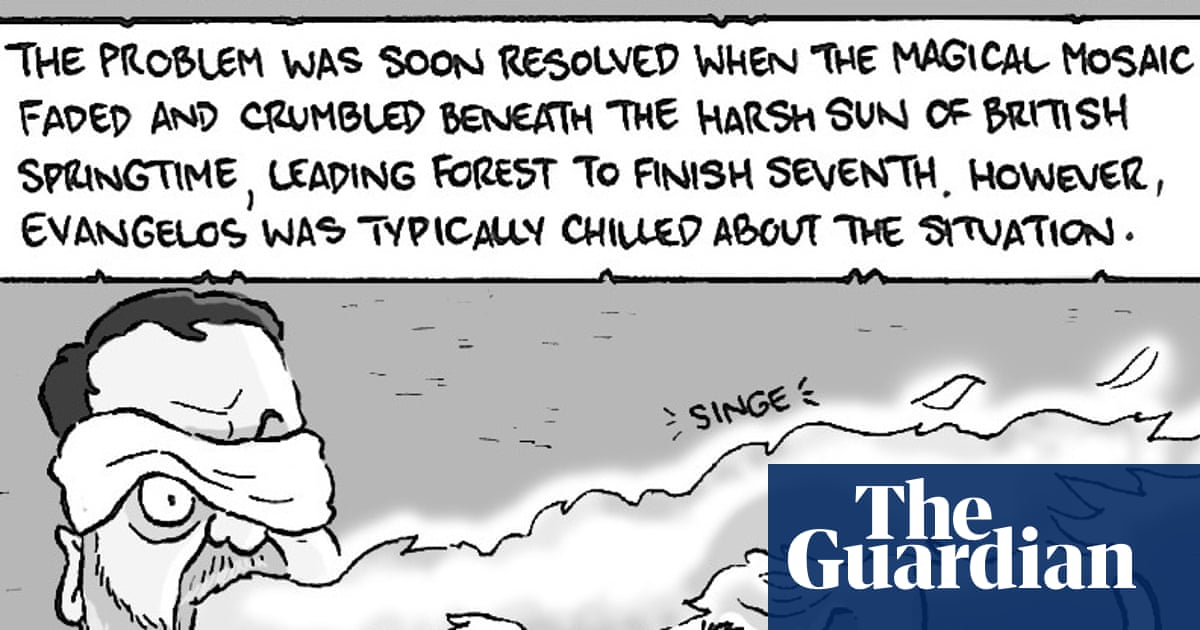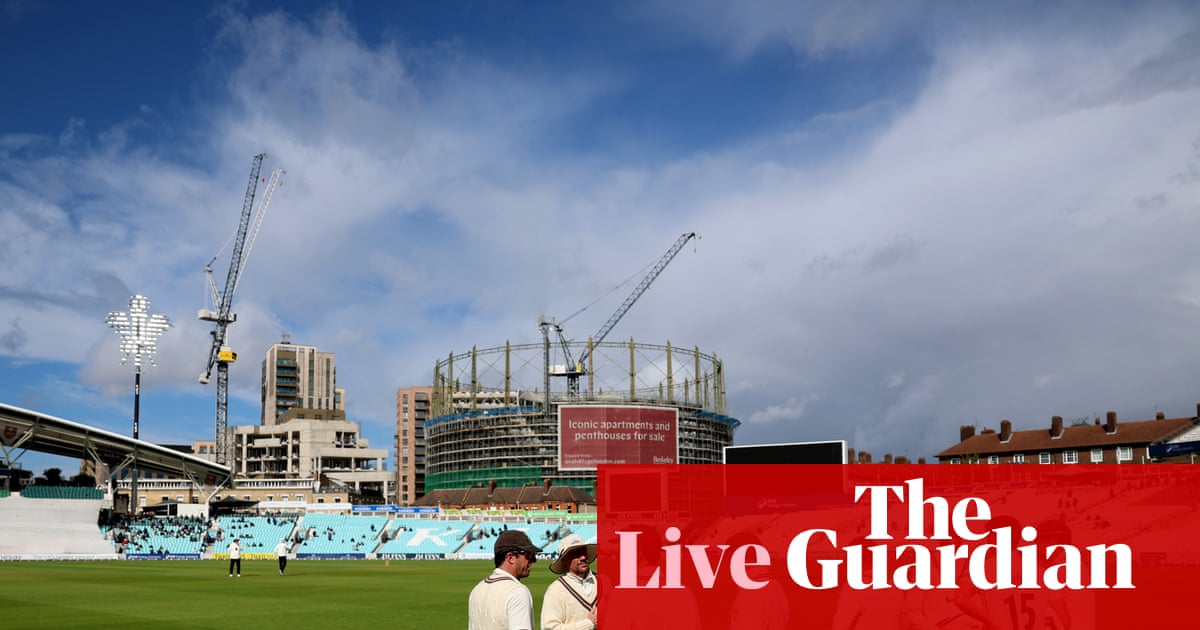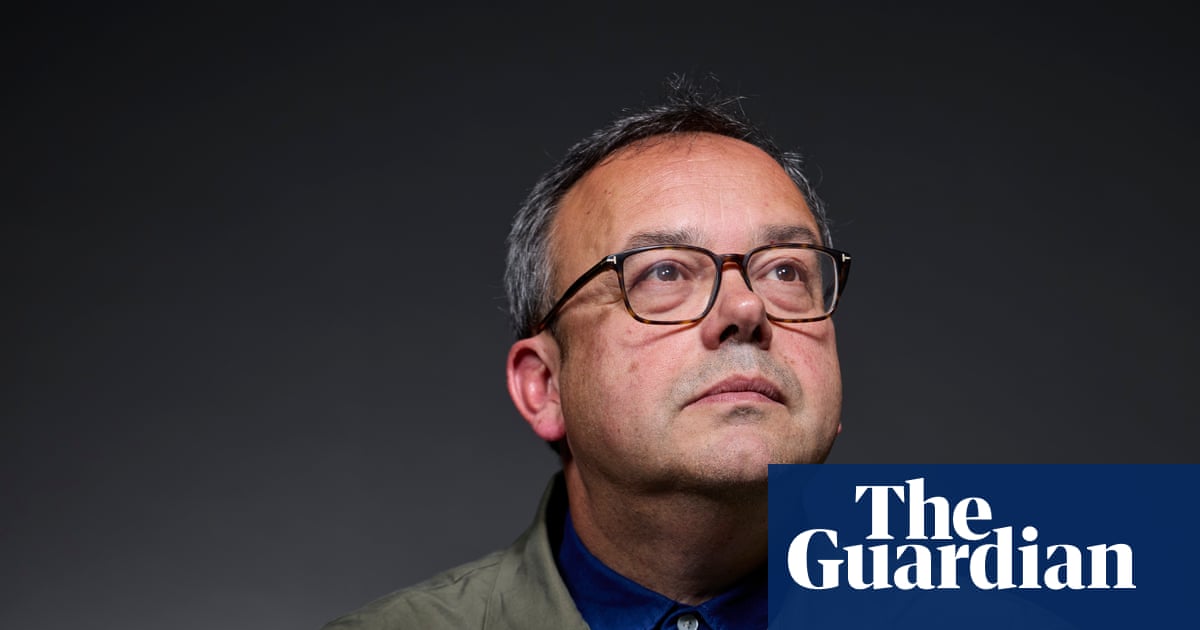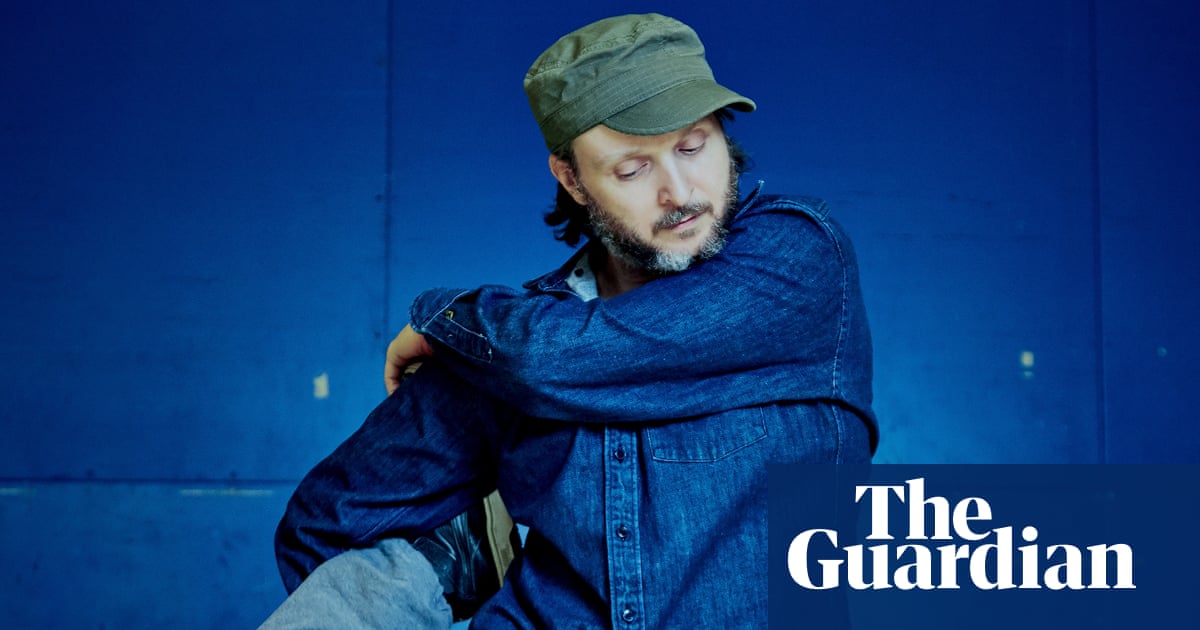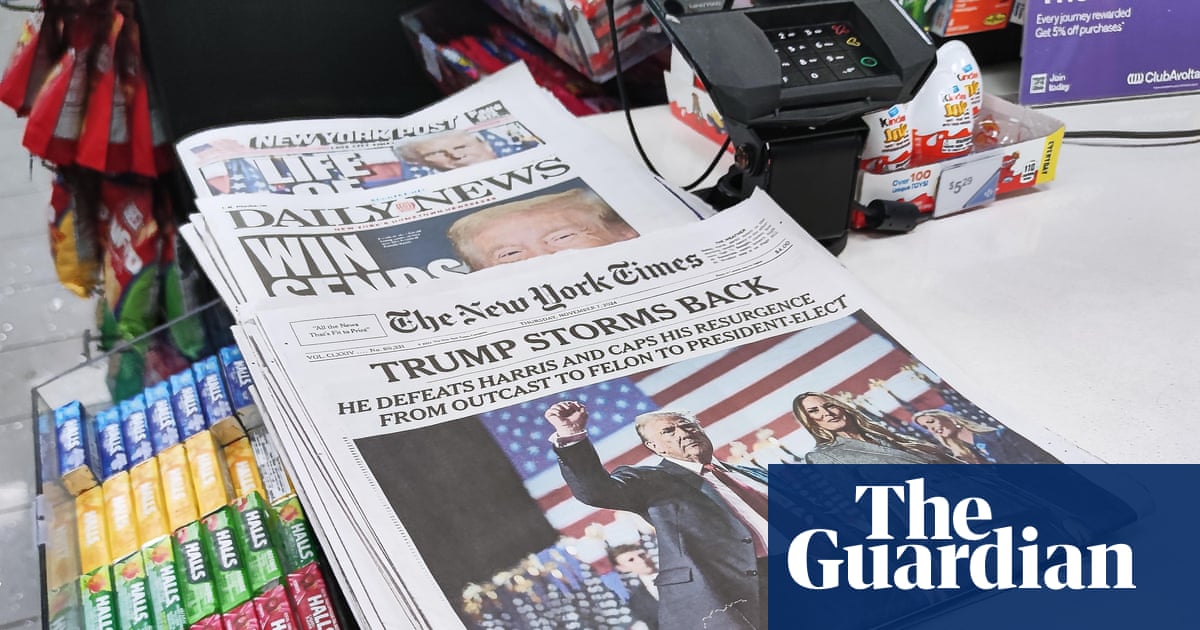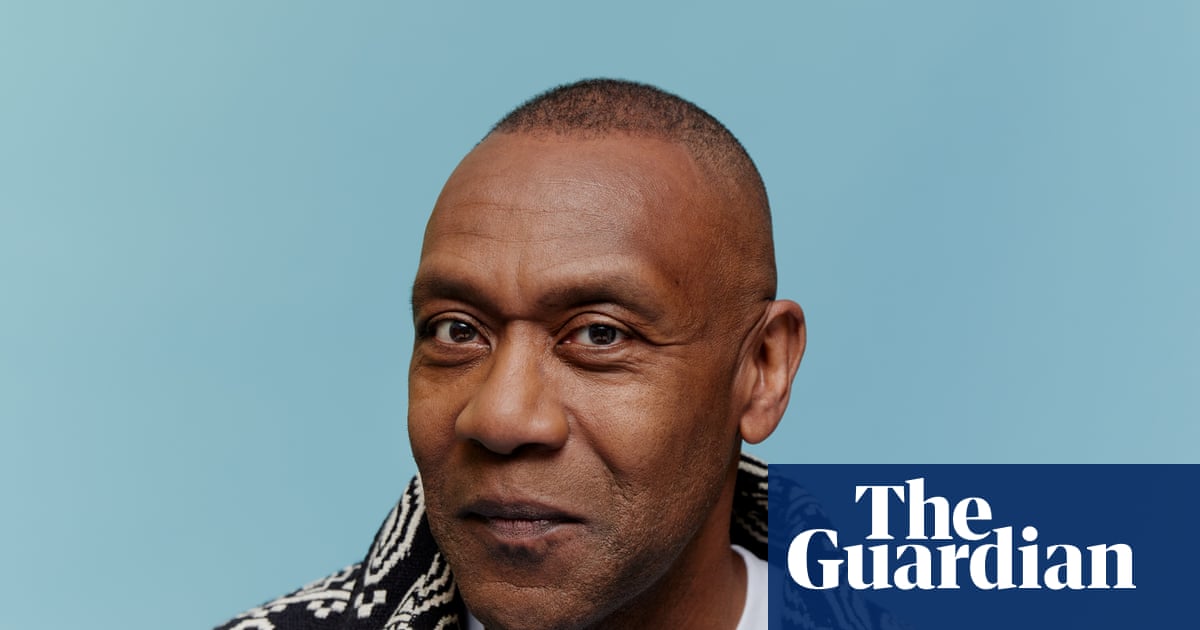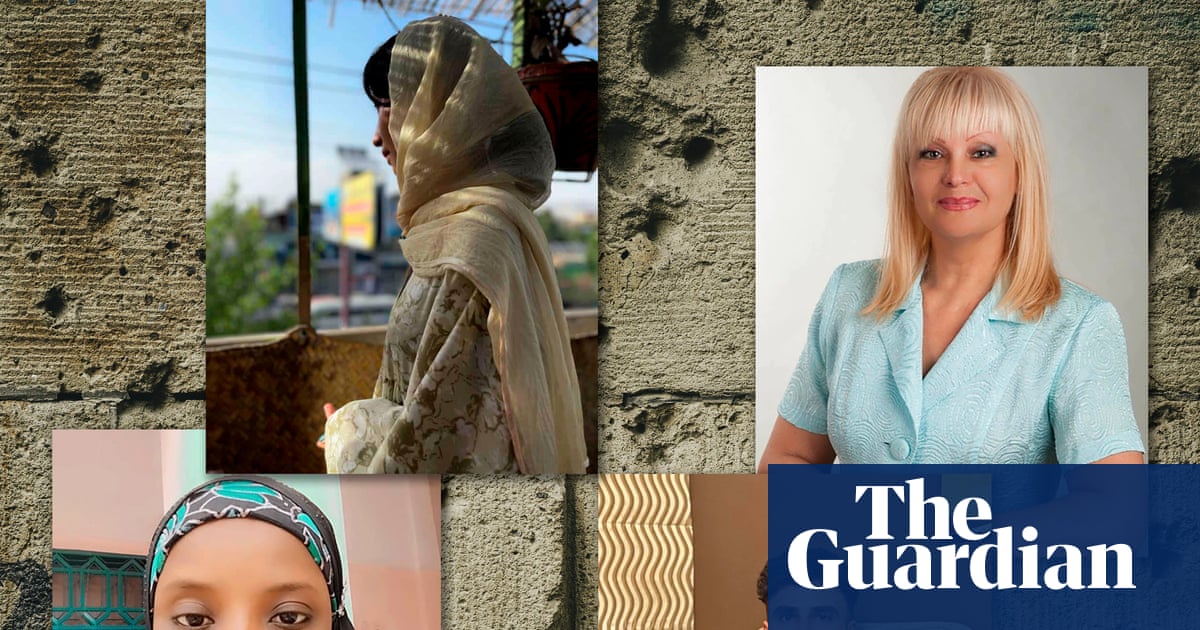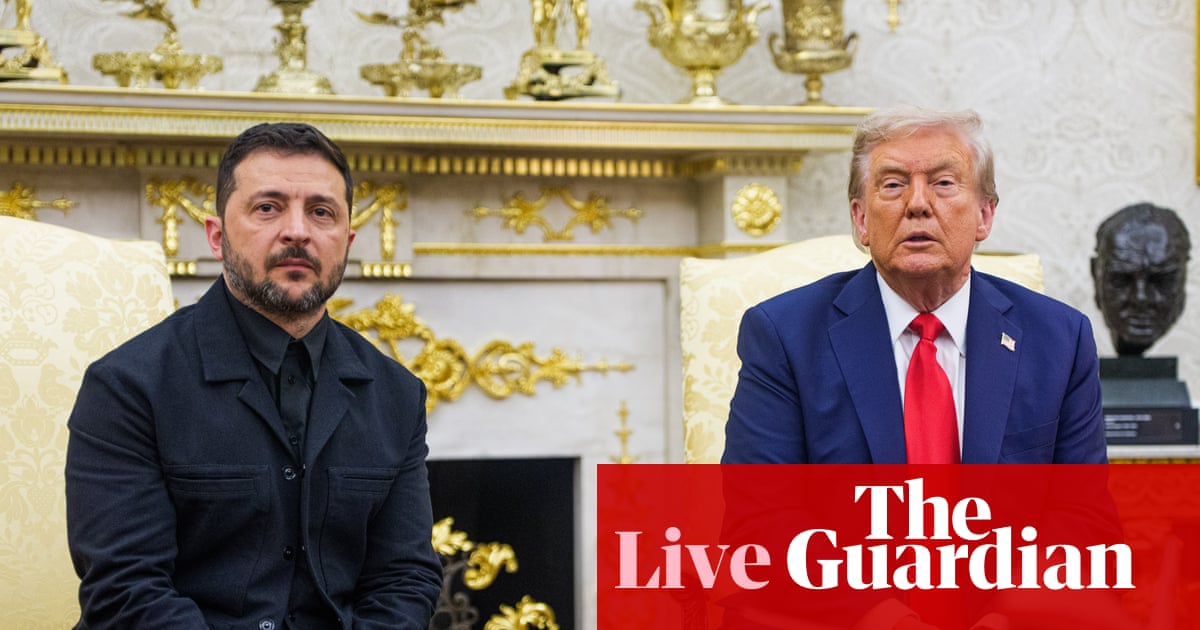A boy pulling a funny face, a sleeping pet, a grandfather in his chair – all ordinary scenes from life that many of us would take for granted. What makes these images special is they were taken by Palestinian children, refugees displaced to Egypt since Israel’s war in Gaza, making sense of their new, if hopefully temporary, home and what they have escaped from.
“It’s familial life, relationships, and although they’ve seen so much, you’re not seeing trauma, you’re not seeing the faces of people that have given up,” says the photographer Misan Harriman, an ambassador for Save the Children. “Even though none of these kids know what the future brings and there’s huge uncertainty, they are living in the moment. They’re doing their best to thrive and learn.” The camera, he adds, is “a seemingly inanimate object that can help you find answers to a world that is confusing, and even more confusing for some of these children.”
Harriman led a photography workshop in Cairo, run by Save the Children and the charity Choose Love, in which 10 Palestinian children from Gaza, between the ages of 11 and 13, were given a camera and taught how to use it. Over several weeks, they created their own images. It was fun and an outlet for creativity, but it was also about much more, says Harriman. These are children forced to leave their homeland. “They understand what bearing witness means,” he says. “They understand what preserving memories means, and hopefully taking pictures of friends, loved ones, possessions they love, it’s just a beautiful, maybe even cathartic experience for them.”
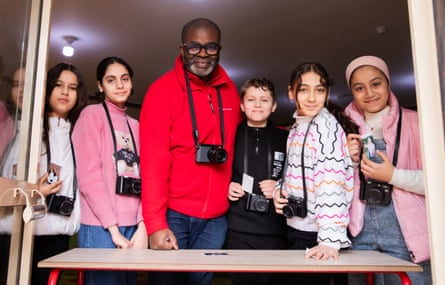
-
Misan Harriman, centre, with some of the children involved in the project. Photograph: Anna Sass/Save the Children
The children who took part in the project are the lucky few, he acknowledges. In Egypt, temporarily home to 100,000 Palestinians since October 2023, more than 2,000 children are on a waiting list to access Save the Children’s support services. In Gaza, aid agencies warn of almost total famine as Israel maintained its blockade, only recently and scantly eased. Harriman says: “More than 93% of all the children in Gaza are at critical risk of famine – that means 930,000 children are at risk of famine, disease and death, if nothing’s done.”
Their images, and the portraits taken by Harriman, are about showing “the humanity of Palestinian families. I want us to re-transmit their right to thrive and learn and laugh and grow, and have siblings and parents in their lives to look after them. Those are basic rights, that the children of the occupied territories do not have.”
Harriman started late in photography – he went on to document protests including those by Black Lives Matter and Extinction Rebellion, shoot for British Vogue, and photograph Harry and Meghan, and was nominated for an Oscar for his short film The After – and he says he learned from the children, too. He saw how they didn’t tend to doubt themselves. “They press the shutter because they want to take that image, they want to freeze that decisive moment. I think that’s something that’s core to the essence of photography, and children have that inbuilt. We lose it as we get older.”
He taught them about practicalities such as composition and light, which they picked up quickly, but he says his job was to “plant seeds for these kids to see that with a camera, there are limitless possibilities in how they can tell stories. And all of them have stories that deserve to be heard and seen.” Here, Harriman chooses some of his favourite images from the project.
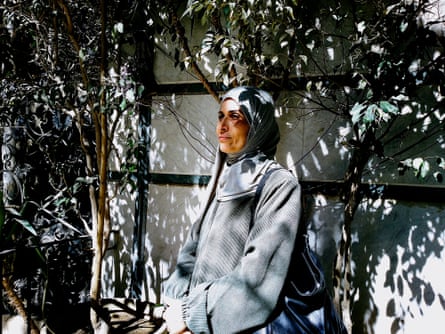
-
Portrait of her mother, by Rawan. All photographs: Save the Children
It’s an extraordinary image, by someone who has never been formally trained in photography to understand composition and light. There are many people that have far more time and resources who wouldn’t necessarily be able to come out with a picture that is this honest, well-composed and a really good representation of what portraiture at its best should be. Palestinian mothers, to me, are deities – they have a strength that few mothers on this planet are forced to have. I see a daughter allowed to capture her love for her mother for eternity. Apart from it just being a good picture, you have a young Palestinian showing respect and recognising the sacrifice and the fortitude of what it means to be a Palestinian mother today.
Rawan says: “This project enabled me to document my memories and enrich my skills. I was able to show what I hope to achieve one day. It meant a lot to me. My mother is my first supporter and witnessed my first steps. I was excited when I took a photo of her.”
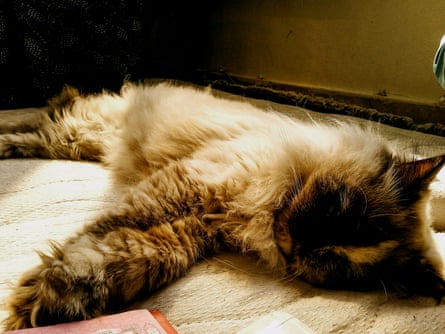
-
Portrait of his cat, by Shadi
It’s subversive in many ways. We have all these gender presumptions of boys, but he says his cat is his favourite thing, and I love the tenderness of that. His pet is what he loves and wants to look after, and it probably makes him feel safe and cosy, with the consideration of what he has been through. Pets are a big part of Palestinian culture and there are many stories of children, with what little food they have, feeding their pets first. The people of Palestine have always looked after the land and their animals. It’s nicely composed, with soft light falling on the cat. It’s a lovely picture.
Shadi says: “All my photographs are special to me and each photo has its own significance. My favourite photo is the one of my cat, because she’s the most precious thing I own and I feel a great deal of responsibility towards her.”
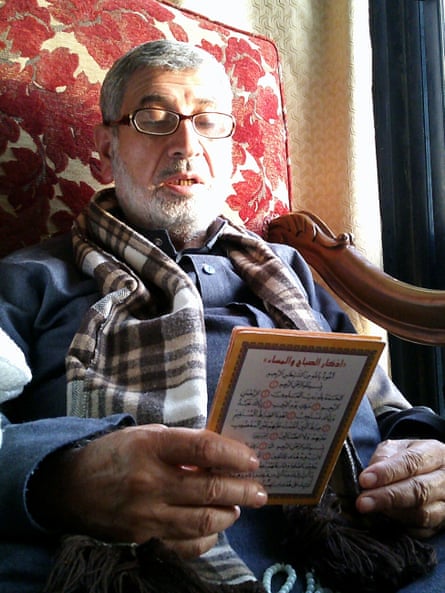
-
Portrait of his grandfather, by Shadi
It’s hard not to get emotional when you think of the generations that have been taken from Palestinian kids. What I love about this image is the grandfather’s hands. You think of the life those hands have seen – this is a man that’s probably old enough to have been a child during the Nakba in 1948 and he’s still with us, and lucky enough to be able to look down to his beautiful grandson. It’s a hopeful picture, but it’s also a picture to remind us of the generation of the Nakba who have had so much taken from them.
Shadi says: “Owning a camera impacted my life positively. It made me notice and value all the things that I own. It made me see beauty in everything, and I hope I can continue my journey in photography.”


-
Portrait of his sister, and family portrait, by Ayman
The background – the hanging lanterns, the patterned rugs – gives a rich sense of place and the square of light frames her beautifully. This photo captures a sense of the trust and familiarity between the two siblings. The image of Ayman with his family is special simply because it’s sadly so rare to see a Palestinian family all together in one photograph in such a normal setting. They are still together, in spite of everything.

-
Self-portrait, by Ayman
He’s being exactly what an 11-year-old boy is. That could be an image taken on any street or apartment in Britain. He just looks like a happy, cheeky boy. I think that’s what makes it a great portrait.


-
High-rise building and self-portrait, by Toleen
The high-rise building with pure blue skies and Ramadan bunting gives a sense of her everyday life and place, but also a feeling of warmth and optimism, and shows how the month of Ramadan is one of real celebration. I love the selfie of Toleen in the mirror. She took this on the day of the workshop, possibly when she got back home and was playing around with the camera. She looks a little shy, but also happy, and it was heartwarming to see her growing in confidence.
Toleen says: “I felt happy and excited during the project, because I was going through new experiences and learning how to see things from a different perspective. It really had an impact on me. I see life now in a different, more beautiful way. Having a camera has become a part of my life and taught me to pay attention to the small details of the world around me.”


-
Self-portrait reading the Qur’an, and self-portrait, by Taleen
There’s a lovely contrast between the two images which demonstrate Taleen’s connection to her faith – the quiet, contemplative moment as she read the Qur’an at home with beautiful soft lighting pouring down on her from a window above, versus the portrait of her in front of a glittery Ramadan decoration outside, which gives a real sense of the celebratory mood of that month. That spirituality, I think, has been increased in these kids because of what they’ve seen. Judging by the sense of strength that many of the young people have, I think their faith has been central to it, so it’s not surprising that many of them photographed prayer mats and beads, and Qur’ans.
Taleen says: “My favourite photograph is the one of me while reading the Holy Qur’an because it makes me feel happiness, serenity and safety.”
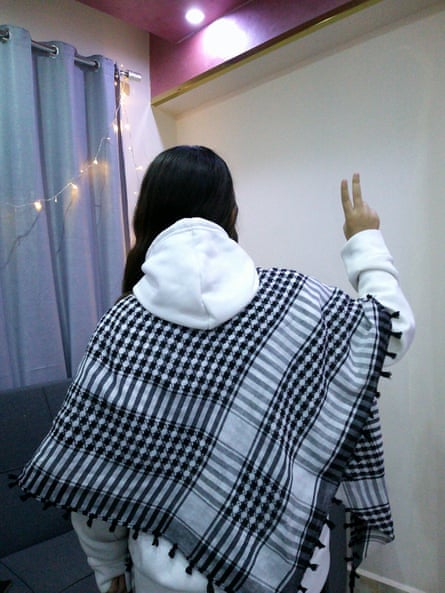
-
Self-portrait, by Masa
This image of Masa in her keffiyeh is powerful as it shows her pride in her nationality and identity, and she stands resolutely in the middle of the frame. It feels quiet but strong – and giving the peace sign adds a powerful layer of meaning. The keffiyeh in particular is really meaningful in terms of identity. Many chose to photograph the keffiyeh, pictures of the Qur’an and breaking the fast at Ramadan, because these are all memories. They’re saying you cannot erase these images, and let that be the truth that the rest of the world sees, which I think is a really powerful thing.
Masa says: “The keffiyeh is our national symbol. This project was a new, enjoyable experience for me. I learned a lot from it. Photography helps me to express my feelings in a beautiful way.”
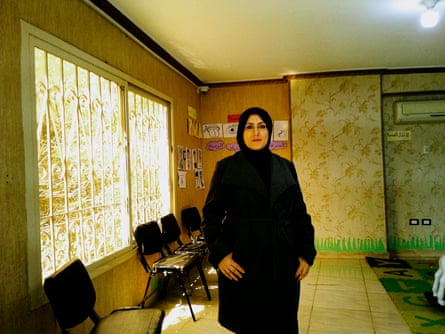
-
Portrait of teacher, by Adam
This image is of one of the teachers at Save the Children’s child-friendly space in Cairo. Many of the teachers and volunteers who run the programme are Palestinian. It gives a sense of the environment in which the group spends their days, and the responsibility she bears as teacher, bringing displaced Palestinian families together and providing them with a sense of belonging and unity in a new city and country.
Names have been changed. Visit savethechildren.org.uk to find out more

.png) 2 months ago
36
2 months ago
36
